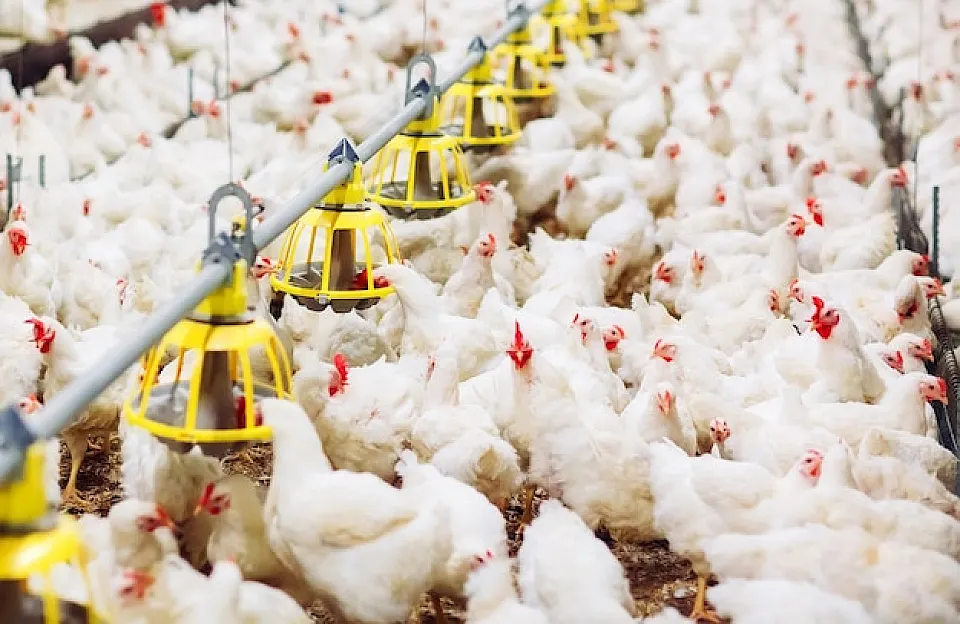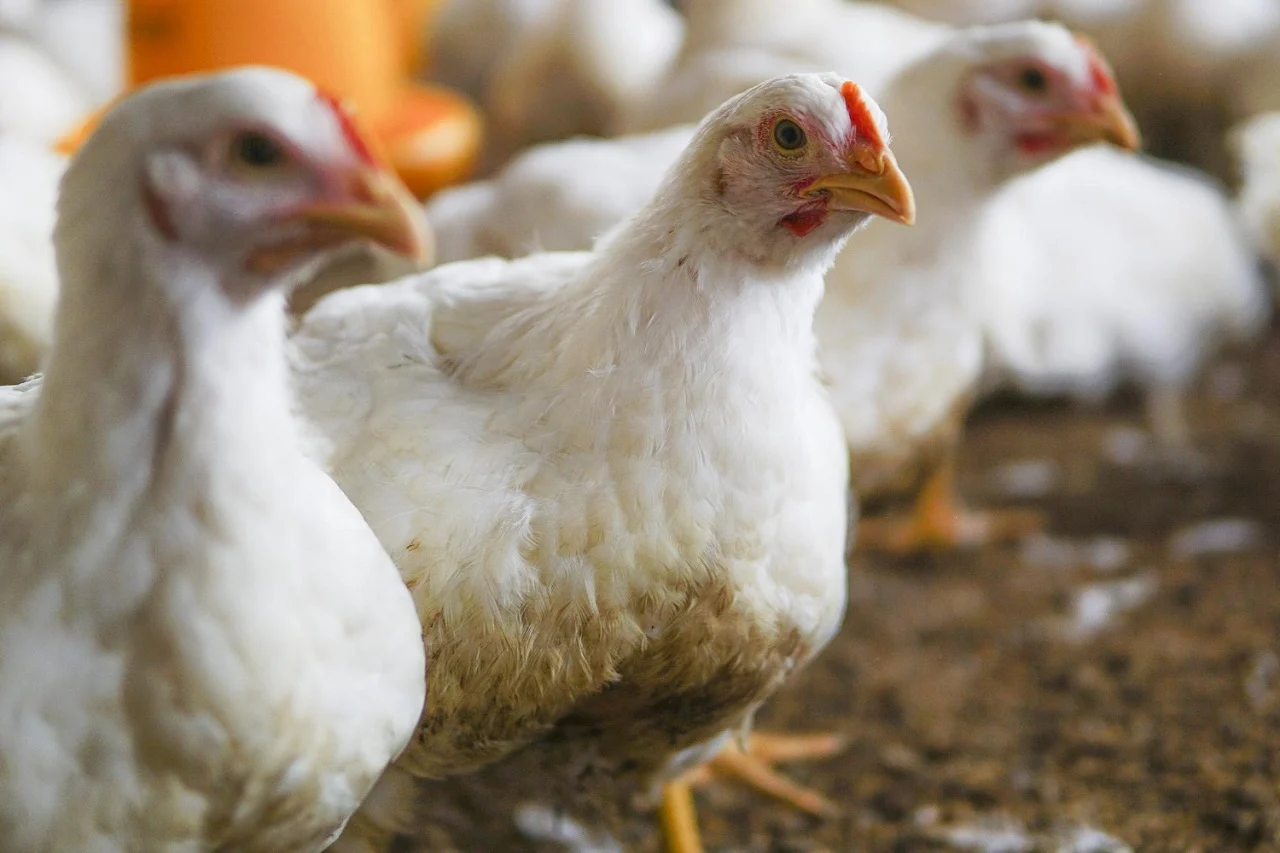Poultry farming is one of the most dynamic and profitable sectors of the agricultural industry in India. With increasing demand for chicken meat and eggs across rural and urban populations, poultry farming has become a reliable source of income for farmers, entrepreneurs, and agribusinesses.
At Royal Farms, we are committed to transforming traditional poultry practices into modern, efficient, and eco-friendly systems. Our integrated poultry farming EC sheds are designed to improve bird health, increase productivity, and reduce labor. In this blog, we’ll explore the basics of poultry farming, types of poultry systems, effective techniques, and fascinating facts that make this industry thrive.
What is Poultry Farming?
Table of Contents
TogglePoultry farming involves the raising of domesticated birds such as chickens, ducks, turkeys, and geese for meat, eggs, or feathers. Among these, chicken farming is the most popular due to its quick growth cycle and high market demand.
Modern poultry farming focuses on scientific practices, disease prevention, automation, and sustainability to maximize yield and profitability.
Types of Poultry Farming
Different types of poultry farming systems exist based on the birds raised and the purpose of farming. The most common categories include:
1. Broiler Farming
Broilers are chickens bred specifically for meat production. They reach market weight (1.5–2.5 kg) within 5–6 weeks, making broiler farming a fast-return investment.
2. Layer Farming
Layers are hens raised for egg production. They begin laying eggs around 18 weeks and continue productively for up to 72 weeks. A good layer can lay 250–300 eggs per year.
3. Backyard or Free-Range Farming
Popular in rural areas, this method allows birds to roam freely. Though production is lower, the meat and eggs are often preferred for their organic quality.
4. Integrated Poultry Farming
Integrated systems combine with fish, goat farming, or crop cultivation. Waste from poultry is reused as organic manure or fish feed, maximizing efficiency and minimizing waste.
Techniques and Best Practices in Poultry Farming
Adopting modern techniques helps improve productivity, reduce mortality, and ensure better profits. Here are key techniques you should implement:

1. Eco-Controlled (EC) Poultry Sheds
At Royal Farms, we specialize in EC poultry sheds—a game-changer in farming. These sheds are temperature-controlled, ensuring optimal conditions for bird growth throughout the year. Key features include:
- Ventilation systems
- Automatic feeders and drinkers
- Temperature and humidity control
- Biosecurity management
2. Balanced Feed & Nutrition
Providing high-quality feed rich in protein, vitamins, minerals, and amino acids is essential. Broilers need protein-rich feed for faster weight gain, while layers require calcium-rich feed for stronger eggshells.
3. Clean Water Supply
Ensure clean, fresh water is available 24/7. Use automatic nipple drinkers or bell drinkers to maintain hygiene and prevent water wastage.
4. Disease Control & Vaccination
Vaccination schedules must be followed for common poultry diseases like:
- Newcastle Disease
- Infectious Bursal Disease
- Marek’s Disease
- Fowl Pox
Regular deworming and sanitization of the poultry house reduce disease spread.
5. Lighting System
Proper lighting improves feed intake and enhances egg production. Broilers need 23 hours of light daily for the first week, while layers require about 16 hours during laying phase.
Poultry Housing: Why It Matters
Housing plays a vital role in maintaining bird health and production levels. An ideal poultry house should be:
- Well-ventilated and dust-free
- Spacious (broilers need ~1 sq. ft. per bird, layers need more)
- Raised from the ground to avoid dampness
- Protected from predators and harsh weather
Royal Farms offers custom-designed EC sheds that meet all these criteria, enhancing comfort, reducing labor, and increasing returns.
Benefits of Poultry Farming
Here’s why poultry farming is one of the most sought-after agribusinesses in India:
- Low Initial Investment
Setting up a basic poultry unit requires less capital compared to dairy or goat farming. - Quick Returns
Broilers reach market weight in 5–6 weeks, while layers start laying eggs within 5–6 months. - High Demand
Chicken meat and eggs are staple foods across India. Demand surges during festivals and wedding seasons. - Employment Generation
Poultry farms create direct and indirect job opportunities in rural and semi-urban areas. - Sustainable Farming
Integrated poultry farms help recycle waste, reduce environmental impact, and boost organic production.
Interesting Facts about Poultry Farming
- India is the 3rd largest egg producer and 4th largest chicken producer globally.
- One hen can lay 250–300 eggs per year under optimal conditions.
- The poultry industry in India grows at 8–10% annually.
- A well-managed broiler farm can earn profits within 45–60 days.
- Poultry litter (waste) is a rich organic fertilizer used in agriculture.
Market Opportunities
With smart marketing, branding, and partnerships, poultry farmers can sell:
- Live birds to meat shops
- Eggs to hotels, restaurants, and retail stores
- Poultry manure to organic farms
- Processed chicken and value-added products (if FSSAI-certified)
Digital platforms, WhatsApp groups, and online marketplaces also offer great B2B and B2C selling potential.
Final Thoughts
Poultry farming is not just a business—it’s a sustainable livelihood opportunity for millions of Indian farmers. With the right techniques, housing, breed management, and marketing strategy, you can build a successful and scalable poultry farm.
At Royal Farms, we are here to support your journey with advanced integrated poultry farming EC sheds, expert consultation, and feed solutions. Visit our website to explore our latest shed designs and get started with a future-ready poultry setup.













